There are all sorts of vegetables in the world, and depending on the language, different ways of saying them! Today, we are going to take a deep dive into vegetables that start with the letter M and learn a little bit about each of them. At the end, we will also list out some of the other veggies that didn’t make the list but are worth an honorable mention. Some of these vegetables you have probably heard of, but some are probably new to you. Let’s find out what they are.
10 Vegetables That Start With M
Before we start, it’s important to remember that foods have different names, especially when you cross languages. The following vegetables have at least one common name that starts with the letter M.
Malabar Spinach (Basella alba)
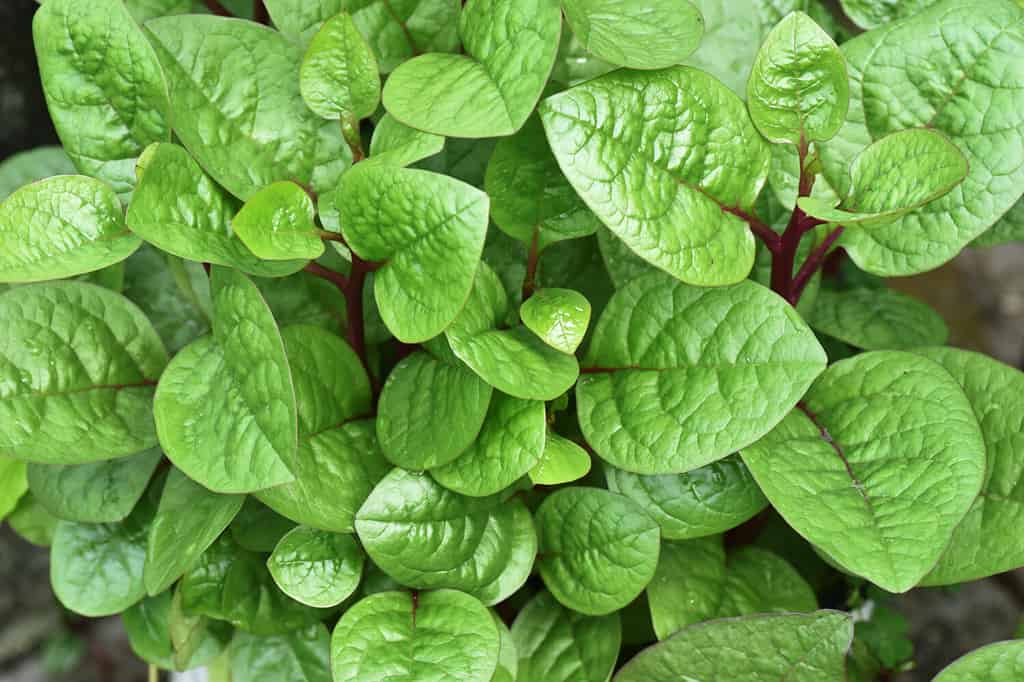
An edible leafy green native to India, Southwest Asia, and New Guinea, Malabar spinach has several names.
©AjayTvm/Shutterstock.com
Malabar spinach is an edible vine in the Basellaceae family. It goes by a few names, including vine spinach, Indian spinach, Alugbati, Lukbati, and Ceylon spinach. Malabar spinach is a soft-stemmed vine that can grow 33 feet in length. It comes in two color varieties, red and green, and has heart-shaped leaves. Malabar spinach is native to India, Southeast Asia, and New Guinea. It was introduced and naturalized in parts of Africa, Brazil, Belize, Columbia, the West Indies, Fiji, and French Polynesia. Malabar spinach favors tropical climates and has been used as a leaf vegetable for a very long time. You can usually find it in Asian supermarkets.
Mallow (Malva)
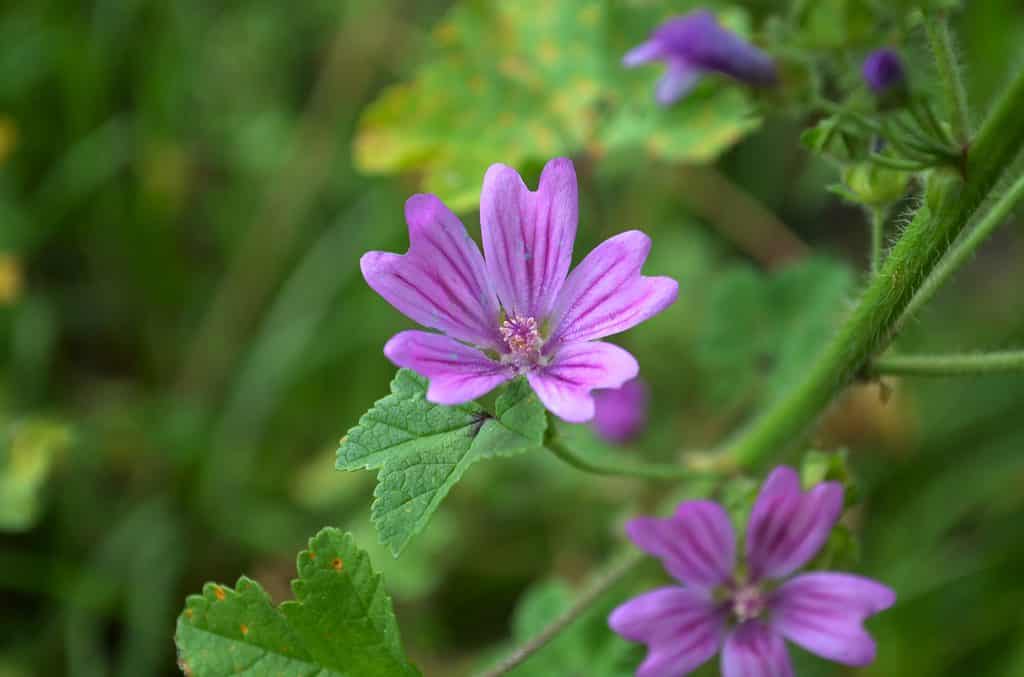
Often referred to as hibiscus, mallow is a very common (and famous) plan used for foods and in gardens worldwide.
©Lartos_82/Shutterstock.com
Mallow is a wild plant with edible flowers and leaves in the Malvaceae family. However, it is probably more commonly referred to as hibiscus, especially species within the Malva genera. Of the Hibiscus species, the great rose mallow, soldier mallow, and rose or common mallow are the most common. Still, other species appear as garden decorations all over the world. Mallow is native throughout temperate and tropical regions across Africa, Asia, and Europe. As an ornamental plant, mallow is used for gardens for their leaves, plus they have a beautiful smell. As a food, a few species have edible leaves that can be a substitute for lettuce or other leafy vegetables. The buds and flowers appear in salads. Some common foods that use mallow include Soachal, khubeza patties, and ebegümeci.
Molokhia (Corchorus olitorius)
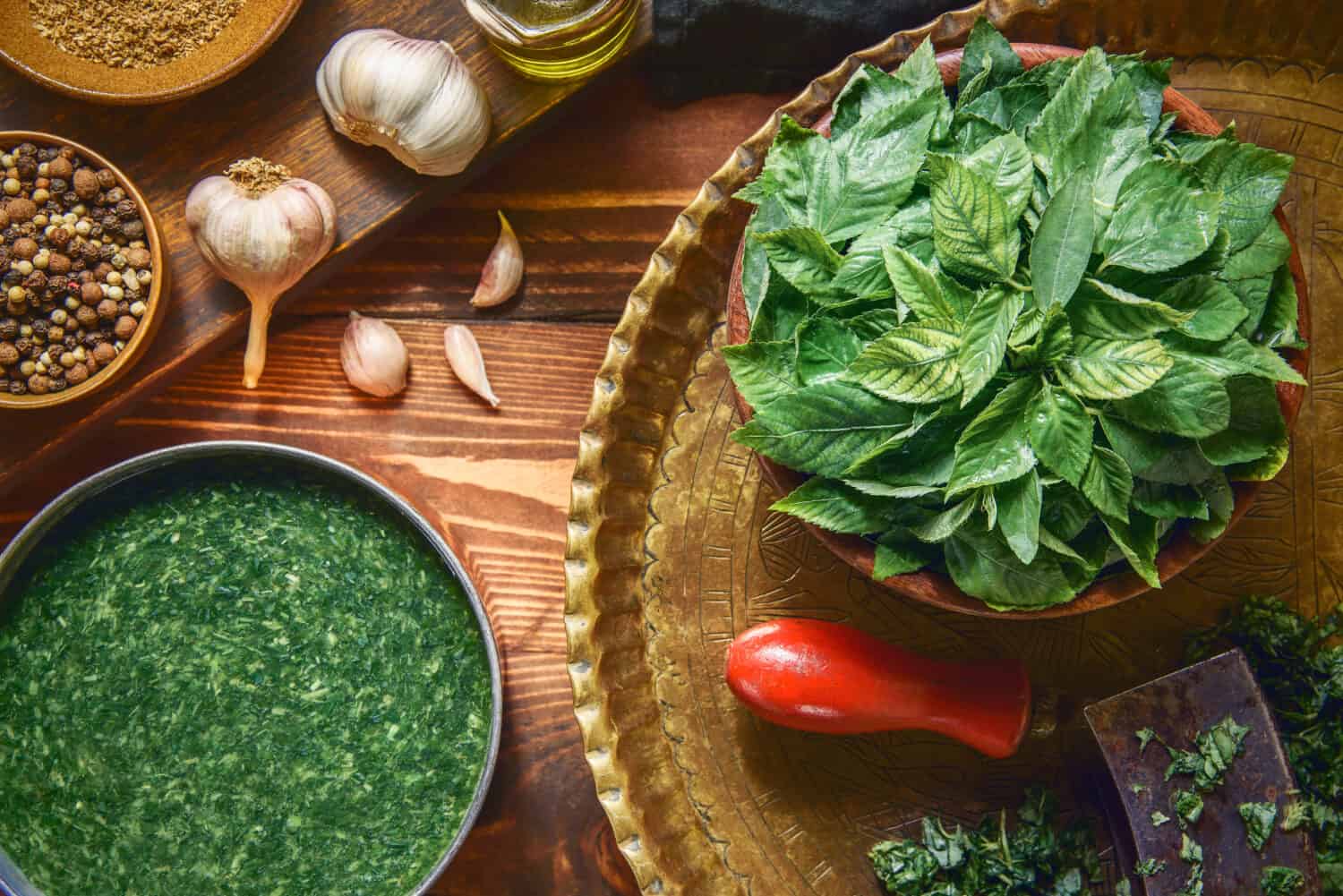
Part of the Malvaceae family, Molokhia, or Egyptian spinach, is used in lots of traditional dishes.
©Dina Saeed/Shutterstock.com
Molokhia (Corchorus olitorius) is an edible plant in the Malvaceae family. It has many names, including jute mallow, Jew’s mallow, molokhia, molohiya, ewedu, and Egyptian spinach. Molokhia is native to the Middle East and Africa. It was likely first used in Ancient Egypt, although there is some evidence that it was also used in India as a leaf vegetable for centuries. It is the main ingredient of a popular soup dish that also goes by the name molokhia. The plant has such a long history that some medieval recipe books from the Arabic world mention it, as far back as the 14th century in the Kanz al-Fawa’id fi Tanwi’ al-Mawa’id. The plant has dark green or red leaves and stems and yellow flowers that make pods.
Malanga (Xanthosoma sagittifolium)
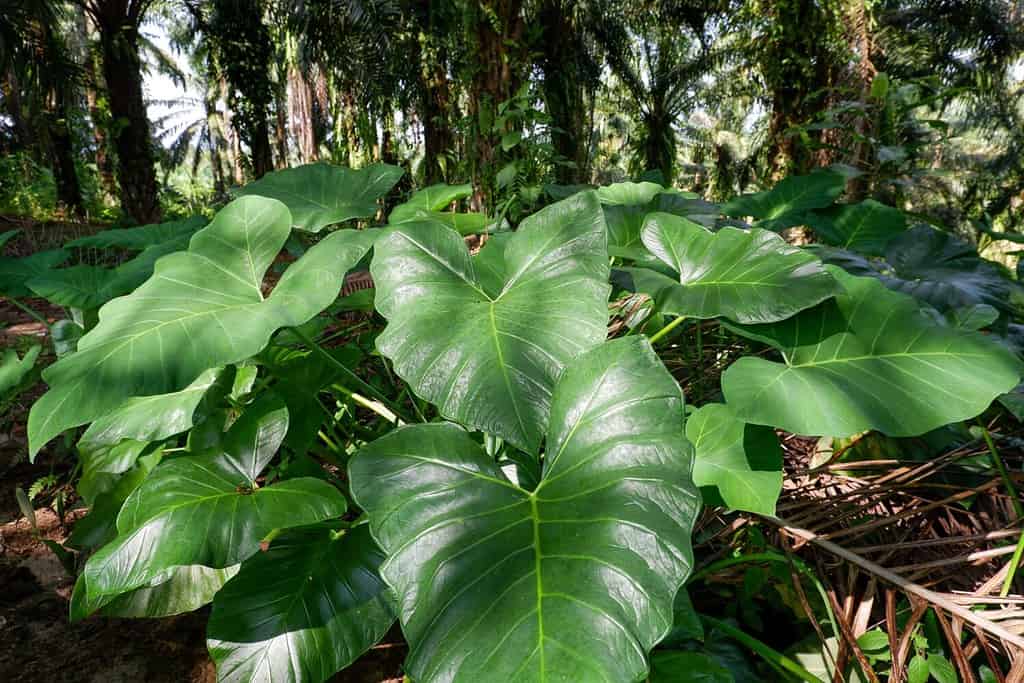
People have been eating the tubers of the malanga plant for hundreds of years.
©Raja Sopan Purba/Shutterstock.com
Malanga (Xanthosoma sagittifolium) is an edible plant in the arum family. It has many names, including yautia, cocoyam, tannia, and blue taro (although what most people think of as taro is a different species from the Colocasia genus). Malanga is native to the tropical and subtropical regions of the Americas. It has been grown and eaten as an essential root vegetable for native peoples for centuries. It is considered a staple food in many Caribbean, African, and Asian foods today, most notably in Puerto Rican pasteles and in the Surinamese dish pom. The plant has large arrow-shaped leaves and grows up to 6 feet tall. The part that people mainly eat is the tuber, which grows underground.
Mangetout (Pisum sativum)
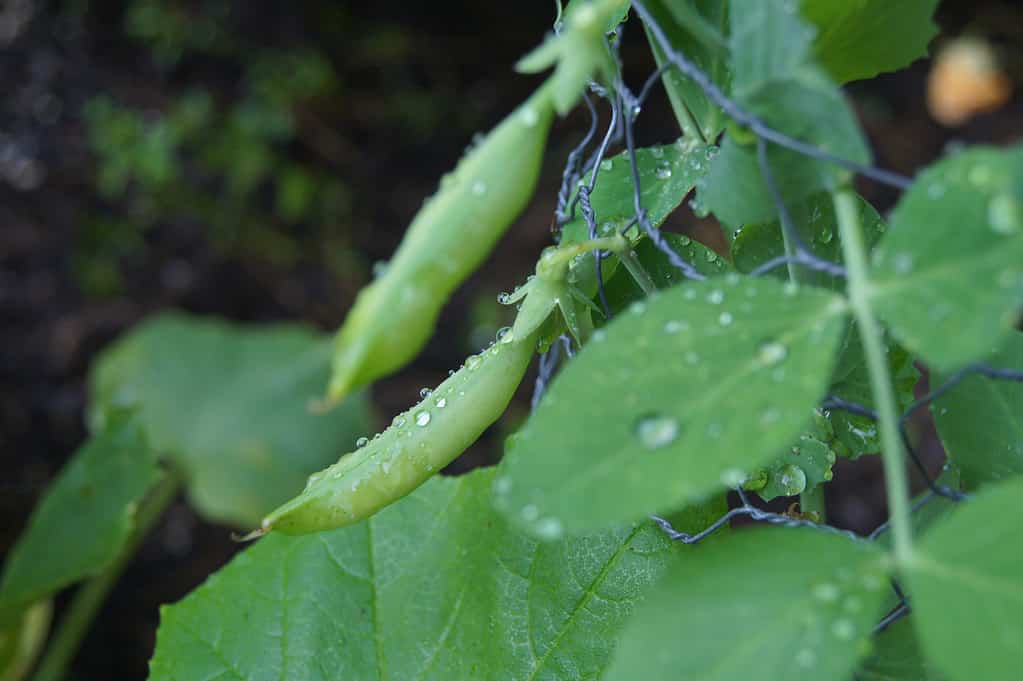
Mangetout is just a French word for sugar or snap peas that means “eat all” since you can eat the pod shell and peas.
©iStock.com/PierceHSmith
The edible plant Mangetout (Pisum sativum) is in the Fabaceae pea family. It has a lot of common names, including snow pea, sugar snap pea, and snap peas. The name mangetout means “eat all” in French since you are able to eat the entire pod, as well as the peas within it. Ultimately, mangetout is just the French name for sugar pea or snow pea! Mangetout is native to Europe and Asia. It has been grown and eaten for a very long time and has spread across the world naturally and via manmade transportation. It is a common ingredient in Asian, European, and American foods.
Miner’s Lettuce (Claytonia perfoliata)

The name “Miner’s lettuce” came from when miners would eat the leaves of this plant to prevent scurvy during the gold rush in the western United States.
©iStock.com/hongquang09
Miner’s lettuce (Claytonia perfoliata) is an edible plant in the Montiaceae family, commonly known as purslane. It has many names, including spring beauty, Indian lettuce, and winter purslane. Miner’s lettuce is native to the western mountain and coastal regions of North America. It has been used as a leafy vegetable by Native Americans and European settlers for centuries, especially those traveling overseas. Since Miner’s lettuce is such a high source of vitamin C, miners heading west would eat it to prevent scurvy during the gold rush; this is the origin of its name. The plant has fleshy, succulent stems and leaves that are round and disk-like. Today, Miner’s lettuce grows over the world and is naturalized in Europe, Argentina, and New Zealand.
Mustard Greens (Brassica juncea)
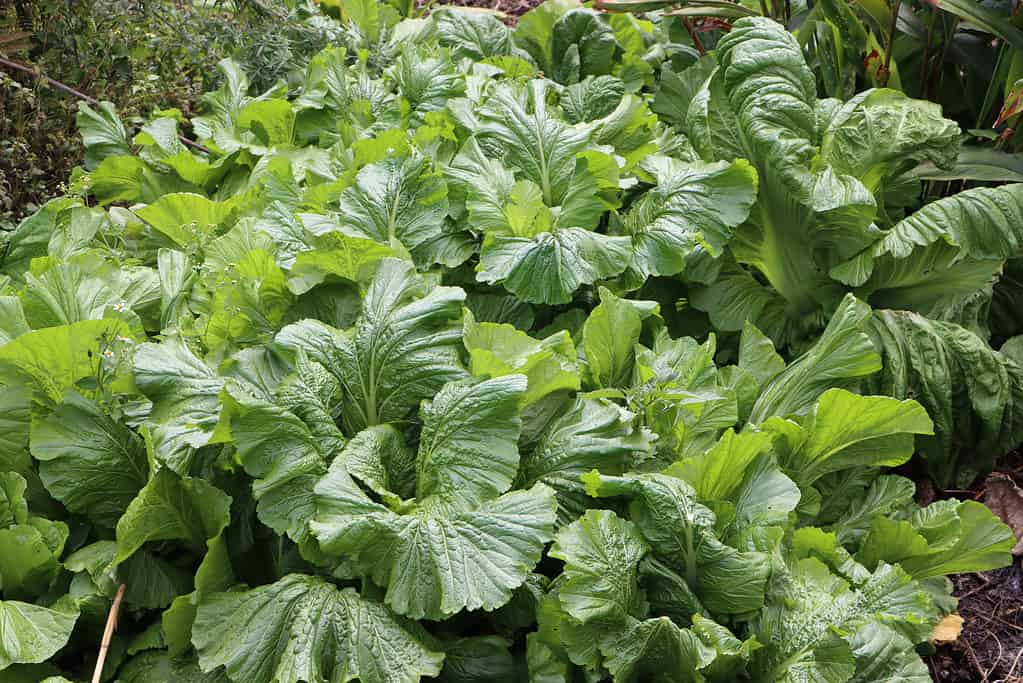
A common ingredient in Southern American foods, as well as in Asia and Africa, Mustard greens are a common member of the cabbage family.
©Pravruti/Shutterstock.com
Mustard greens (Brassica juncea) are an edible plant in the cabbage family. They have many names, including brown mustard, Indian mustard, Oriental mustard, vegetable mustard, and Chinese mustard. Originally, mustard greens were native to Asia and Africa and have been eaten as a leafy vegetable for thousands of years. Today, they are a common ingredient in Asian, African, and Southern American foods. In the United States, mustard greens are often eaten with cornbread, garlic, curry, ham, hot sauce, and bacon, usually with the leaves steamed or sauteed. The plant has large, dark green leaves that have a peppery taste.
Moth Beans (Vigna aconitifolia)
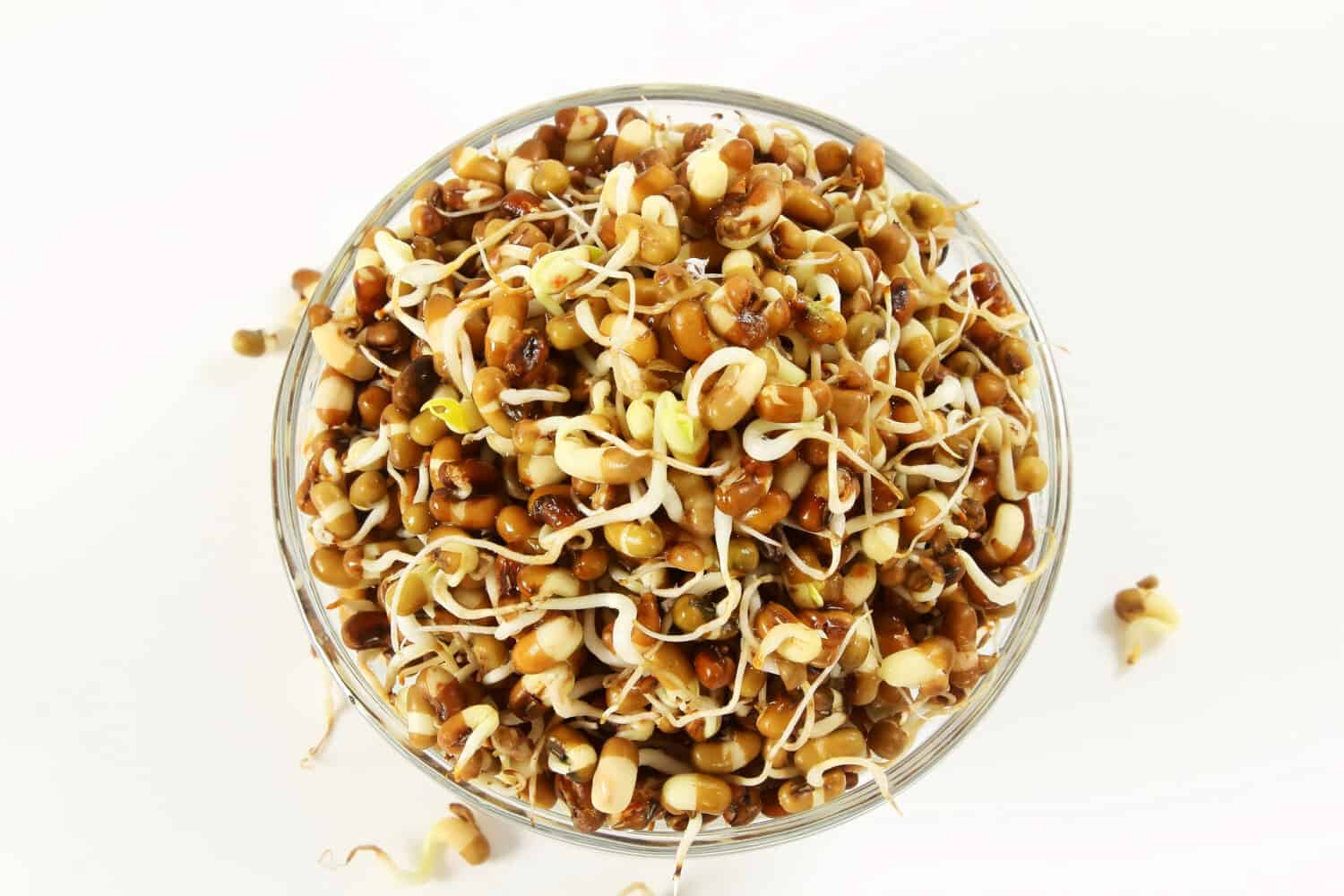
Due to their drought resistance, moth beans are a popular crop on the Indian subcontinent.
©Gv Image-1/Shutterstock.com
Moth beans (Vigna aconitifolia) are an edible plant in the bean family. They have many names, including mat bean, matki, Turkish gram, and dew bean. Moth beans are native to India, although they now grow in the United States, Australia, Thailand, and other areas in Asia. In some regions of India, they are a curry ingredient as well as for soups and salads. They grew due to their extreme drought resistance. The seeds are small, oval, and brown. After sprouting, they can appear somewhat similar to mung beans (covered next).
Mung Beans (Vigna radiate)

The mung bean is an essential source of protein in many parts of Asia and is used for all sorts of dishes, even sweets, and pastries!
©Photoongraphy/Shutterstock.com
Mung beans (Vigna radiata) are an edible plant in the bean family. They have many names, including green gram, yellow gram, and golden gram. Mung beans are originally native to India and Pakistan but have since been grown worldwide. As a legume, they were often grown to “fix” nitrogen in the soil for other crops in a process called “cover cropping”. They appear in all sorts of foods, including sweets and candies in India, as a paste for various Asian dishes, or as sprouts in certain stirfry and noodle dishes.
Maize
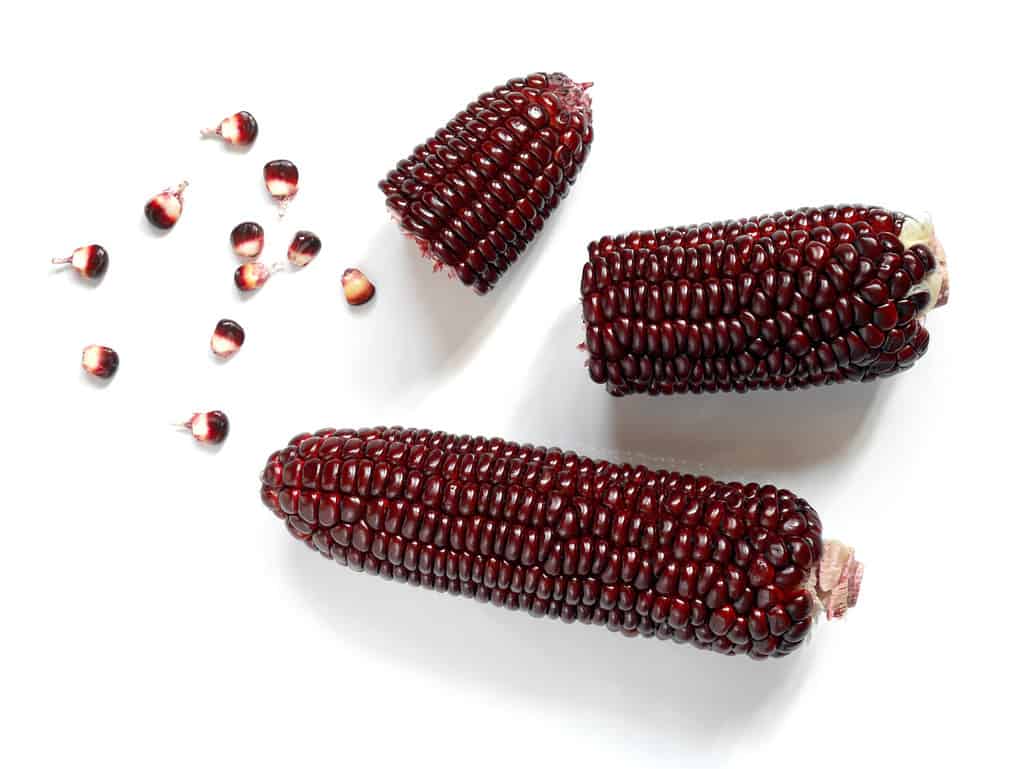
The original name for corn, maize, comes from the Native American people groups who grew it. We are counting it as a vegetable that starts with the letter M!
©p_saranya/Shutterstock.com
Maize (Zea mays) is an edible plant in the grass family (Poaceae), and pretty much everyone knows this plant by its English name, corn! It has many names, including corn, Indian corn, and yellow corn, with maize being the original name given by Native Americans. Maize is native to the Americas and was domesticated from a wild grass called teosinte about 10,000 years ago in southern Mexico. Today, it’s one of the most widely-used crops in the world, especially in North America, South America, and Africa. Aside from eating, it’s used in animal feed, biofuel, and as an industrial raw material since its starches are so readily available.
A List of Vegetables that Start With M:
- Malabar spinach
- Malanga
- Mangetout
- Manoa lettuce
- Marjoram
- Mashua
- Maize
- Miner’s lettuce
- Mizuna
- Molokhia
- Mooli
- Moth beans
- Mung beans
- Mung bean sprouts
- Mustard greens
Thank you for reading! Have some feedback for us? Contact the AZ Animals editorial team.







